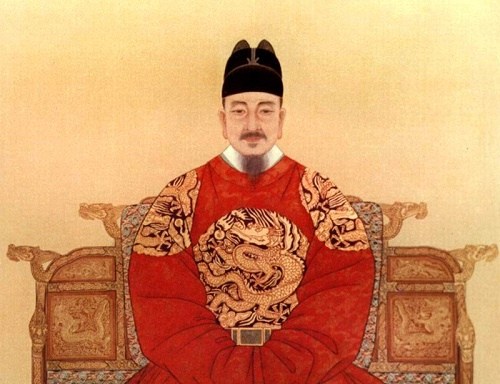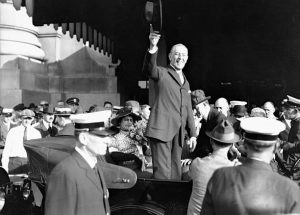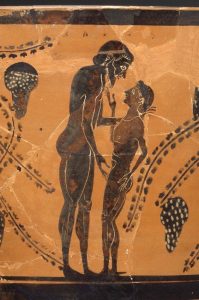During the first half of the fifteenth century, Korea made a wide range of intellectual and technological advances that are not found in other parts of the world. It is named the “Golden Age” of Korea. This was the result of a king full of enlightenment and compassion who led his people out of poverty, ignorance, and injustice through the adoption of a new script that would become one of the most significant developments in linguistic history.

King Sejong was born on May 15, 1397. He was the third son to King Taejong; who was part of the Chosun dynasty (1392-1910). King Sejong was not the next in line to the throne but was chosen for the role due to his intelligence and studiousness. Again, Sejong’s reign is recognized as Korea’s “Golden Age.” His reign is known for improving prisons, agricultural technology, and exposing his people to the arts, regardless of social standings/education levels.1 But one problem arises; most of the population are illiterate.
He decided to create the Korean alphabet in 1446, originally called hunminjongum, meaning “the correct sounds for the instruction of the people.” Efforts to create the Hangul letters were based on the king’s understanding of phonetic theory and Chinese cosmology, since Chinese influence was extremely prevalent in their studies, and those studies gave him a head start in his creation. The original script consisted of twenty-eight letters: seventeen consonants and eleven vowels (now twenty-four letters; fourteen consonants and ten vowels). 2

Throughout the making of the script, King Sejong and his scholars kept in mind that most of its population was illiterate, and therefore had to come up with a script that would be easy to understand and accessible to its people. That it is why the forming of each letter is created based on how it is to be pronounced while also being supported by Daoist beliefs that heaven, earth, and humanity are the three most fundamental features in the universe. According to Hyo Sang Lee, “The consonant letters for k (or g), n, s (or sh), m, and ng are designed after the shape of the speech organs when they are pronounced.”3 For example, the consonant m is pronounced with the mouth, therefore, the corresponding letter is shaped like a mouth. The other consonant letters are made by adding a stroke or two to these or by extending the initial forms. These extensions help create the rest of the consonants. Now as for the vowels, these are designed after the round shape of heaven, the flat shape of the earth, and the vertical shape of a man standing.4 The true artistry of hunminjongum (now known as Hangul) is that it was created to be easier to write and understand. Examples of this include stacking and combining characters into groups of two to five to create syllables.5 This allows the syllables to be grouped from left to right to form words. This concept of writing was done to help the Korean people be introduced to literacy.

But King Sejong’s incredible script invention took years of development and continuous criticism. The new script was considered dishonorable since Mandarin was the spoken language of the elite. The main reason for this was that Korea’s politics and culture were strongly influenced by China and knowing the Chinese writing system was a privilege that separated the elite from the rest of the population.6 The creation of a new script was seen as barbaric and thus, discarding the Chinese script for a vernacular one was leading them to be seen as barbaric in China’s eyes. Even with its harsh criticism, King Sejong being the zealous man that he was, continued his creation. As a result, he sent one of his scholars to China (specifically to Liaotung, Manchuria) various times to consult with the Chinese phonologist Huang Tsan, in a time when travel in China was only possible on foot or by horseback, and he continued to study his script even in his declining health.7
But why was he so passionate about it? It is obvious that King Sejong hoped that a simpler writing system could provide mass literacy, improving the lives of his people. His response was “Because our language differs from the Chinese language, my poor people cannot express their thoughts in Chinese writing. In my pity for them, I create 28 letters, which all can easily learn and use in their daily lives.”8 When the script was finally released, it was welcomed with admiration and prestige. Chung Inji, director of the Royal Academy, who assisted the monarch in the project, said the following words, “[W]ith these letters, writings can be understood, legal appeals can be made, and melodies can be given verses. Even the sound of the wind, the cry of a crane, the flutter of a rooster, and the barking of a dog can all be written down.”9
It is important to understand that Hangul has left a huge legacy. While many other alphabets have been often borrowed and influenced by other languages, no other adaptation can compare to the Korean script as it has set a new type of cultural identity from other alphabets. But none of this would have been possible without the good judgment and compassion of a great king, who always looked out for the betterment of his people.
I would first like to thank God for guiding me towards my dreams and always opening doors that I thought I would never reach. I would next like to thank my parents for being the biggest supporters and always pushing me to be the very best. I would also like to thank Professor Eunhye Kim for her continuous support and for setting time apart to help me bring this topic to life. Lastly, I would like to thank Dr. Bradford Whitener for giving me this opportunity, and for pushing me to bring out the best in my writing.
- Chin W Kim, “The Legacy of King Sejong the Great,” 2000, 1–10, https://www.ideals.illinois.edu/bitstream/handle/2142/9635/SLS2000v30.1-05Kim.pdf. ↵
- Ben Griffis, “Sejong the Great,” in World History Encyclopedia, January 18, 2021, https://www.ancient.eu/Sejong_the_Great/. ↵
- Hyo Sang Lee, “Hangul Script,” in Encyclopedia of Modern Asia, ed. Karen Christensen and David Levinson, vol. 2 (New York, NY: Charles Scribner’s Sons, 2002), 486–87. ↵
- Hyo Sang Lee, “Hangul Script,” in Encyclopedia of Modern Asia, ed. Karen Christensen and David Levinson, vol. 2 (New York, NY: Charles Scribner’s Sons, 2002), 486–87. ↵
- Cynthia Hallen and Michelle Lee, “The History of Korean Language, The Overview,” September 6, 1999, https://linguistics.byu.edu/classes/Ling450ch/reports/Korean3.html. ↵
- Chin W Kim, “The Legacy of King Sejong the Great,” 2000, 4, https://www.ideals.illinois.edu/bitstream/handle/2142/9635/SLS2000v30.1-05Kim.pdf. ↵
- Chin W Kim, “The Legacy of King Sejong the Great,” 2000, 6–7, https://www.ideals.illinois.edu/bitstream/handle/2142/9635/SLS2000v30.1-05Kim.pdf. ↵
- Cynthia Hallen and Michelle Lee, “The History of Korean Language, The Overview,” September 6, 1999, https://linguistics.byu.edu/classes/Ling450ch/reports/Korean3.html. ↵
- Chin W Kim, “The Legacy of King Sejong the Great,” 2000, 9, https://www.ideals.illinois.edu/bitstream/handle/2142/9635/SLS2000v30.1-05Kim.pdf. ↵




6 comments
jlee44
Korea’s unique alphabet “hangul” has so heartwarming story. I highly admired King Sejong’s mindset. His effort to give his poor people new but easy language was wholesome. As a Korean speaking person, this article reminds me of the importance to always thanks to king Sejong and proud of our language. Really appreciate for the article! It was meaningful time to review Korea’s history.
Gabriella Parra
Hangul is such an interesting writing system, and many of the reasons I learned it are listed in this article. I thought the fact that King Sejong came up with it was really cool, I was excited to learn a language that had nothing to do with alphabets I already knew, and it’s very simple! It’s also fun to learn how humans produce sounds differently around the world. King Sejong was truly such a great leader for giving the gift of literacy to his people. There are so many instances in history where leaders do the exact opposite to maintain control.
Santos Mencio
An entertaining article about someone who I had never heard of before. Korean history, especially the mentioned “Golden Age” around the 14th and 15th century isn’t talked about. So being able to read about the accomplishments of King Sejong was incredibly interesting, it seems like he was an incredibly competent ruler dedicated to improving the quality of life of his people.
Carlos Hinojosa
That was honestly pretty cool story this article talked about. It seems like this guy was a great ruler and even a greater person because it seems like he actually genuily wanted to make his country a better place. Instead of rulers usually doing something good just because they either want someone off their back or just want the people to like them for a little bit because they plan to do something they won’t like.
Trenton Boudreaux
I wasn’t aware of Korea having such a golden age, much less that such an age was spurred on by an intelligent king. A very interesting article that informed of the origin of the Korean language. Language, especially written language, is an important part of any culture, as it influences its identity and storytelling practices. Such a piece of culture, therefore, requires a lot of time and effort to design and promote.
Gloria Guzman
Well done. So proud of you